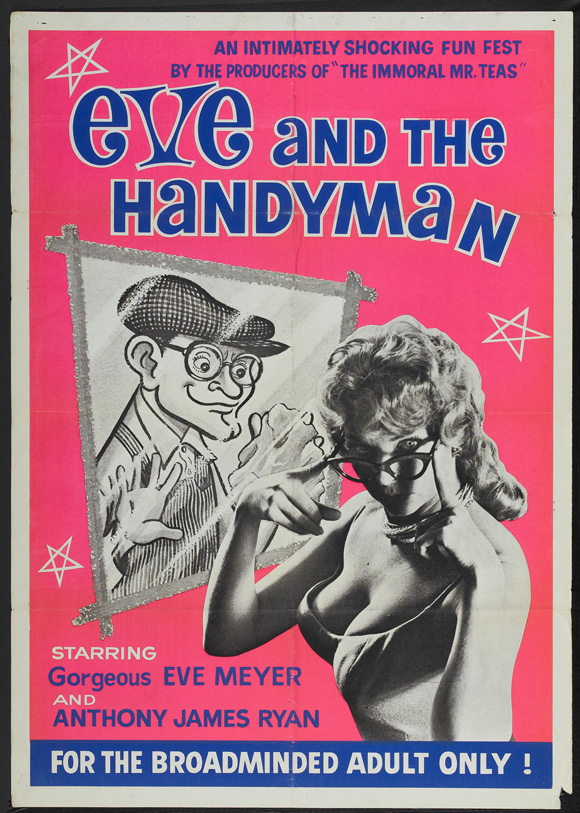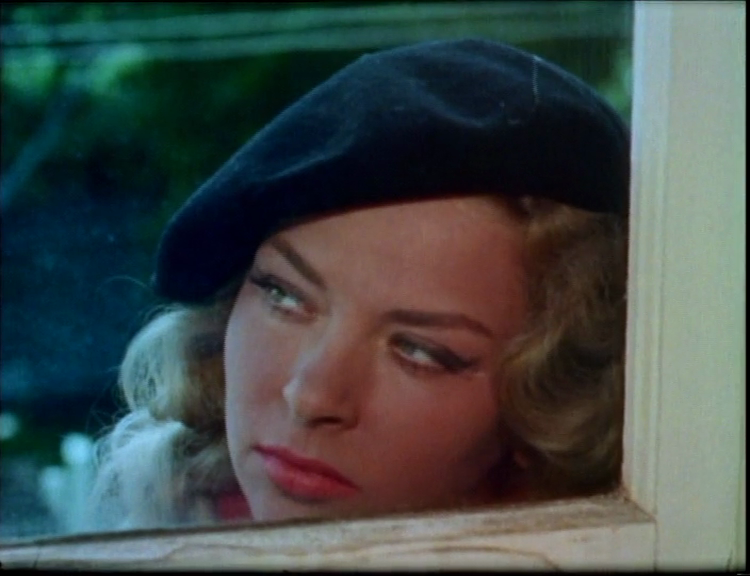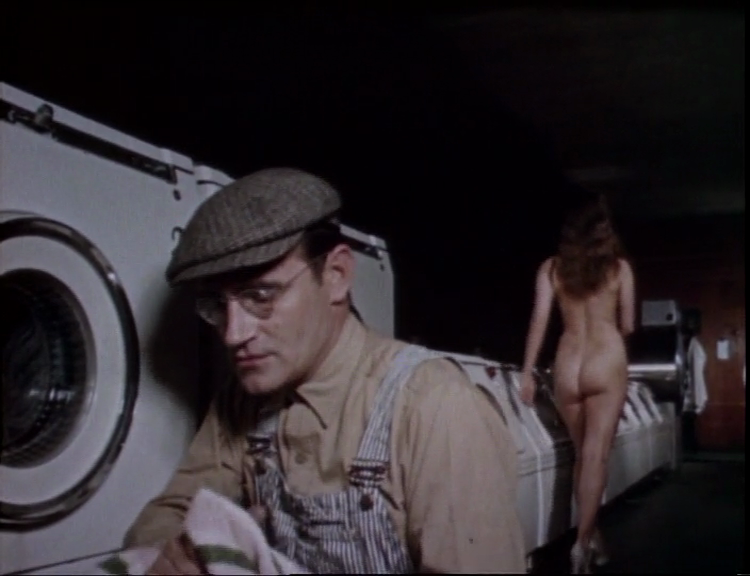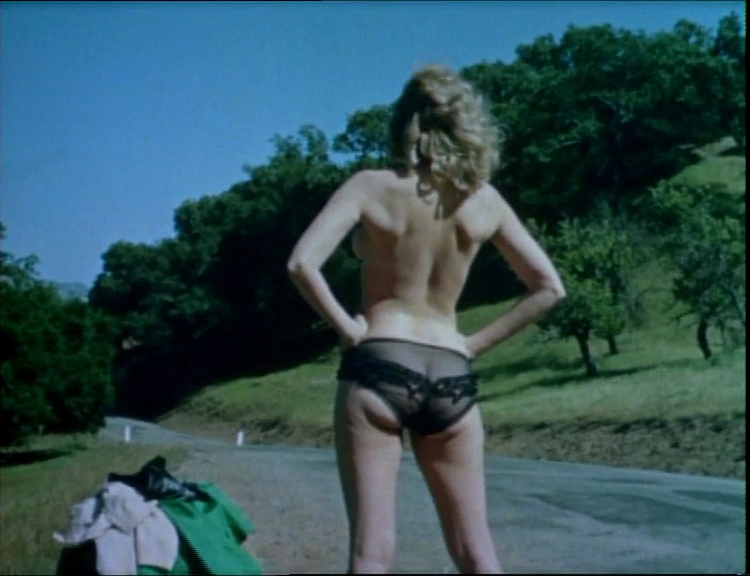How deep can one dive into the cinematic pool of Russ Meyer? When it comes to celluloid, he was a man of singular focus. His modus operandi was an exploration of the mammose female in wildly unnatural habitats. It’s hard to deny the simple pleasures of a quality Russ Meyer film, but one must understand what notions of quality mean when talking about this man’s ouvre. Russ Meyer’s films are typically story-based, but some adhere to narrative more than others. Films such as ‘Faster Pussycat! Kill! Kill!’, ‘Vixen’ and Mudhoney’ are rightfully lauded and possess more than just naked women jumping up and down in the desert. Then there’s those that don’t… ‘Eve and the Handyman’ is one of Meyer’s earliest films and reflects the changing social conditions in which it was made. His first feature, ‘The Immoral Mr. Teas’ was made in 1959 when a cinematic transition was underway regarding depictions of sexuality on screen. Meyer is coy about his approach and it shows. ‘Eve and the Handyman’ is Meyer’s second film and it’s cut from the same ponderous cloth.
No matter how minuscule the budget, Meyer always had an ace up his sleeve – his cinematography. He had a knack for framing his films in exciting ways, often helping to disguise the more cringeworthy aspects. His first two films were clearly made as cheaply as possible. In essence, they’re silent films. All sound comes courtesy of post-production with the only dialogue occurring via reverb-drenched narration. Meyer is to be applauded for pushing forward and making these films irrespective of budget.
With all the in mind, it must be said that I hated ‘Eve and the Handyman’. It’s mere 65 minute running time felt several times longer and by the time the credits mercifully arrived, I was in near-catatonia. The story is threadbare to the point of invisibility. It concerns the title character, Eve (played by Eve Meyer herself) as a sleuth who obsessively follows a handyman as he goes about his daily activities. These activities are frequently banal and usually involve some mild sexual situation. Throughout each situation, shots of Eve laughing are interjected. It follows this formula for an hour before the ‘surprise’ ending. The ending itself is rendered an abstraction by it’s absurdity.
So why waste time discussing this film and why does it qualify for ‘The Sound of Trash’? The answer is the opening scene, which in spite of what follows, I like. It concerns the handyman waking up and wrestling with his alarm clock and the escalating series of events that occur when he is unable to turn the alarm clock off. The sound in this scene was recorded in post production and accompanies the scene wonderfully. The irritating sound of the alarm clock persists for minutes and introduces us to characters we’re never destined to see again. Unlike the rest of the film, this scene is deliberately annoying and, in my opinion, very well executed. It becomes an avant garde composition which accompanies slapstick shenanigans. Without further adieu, please enjoy the scene in question.











